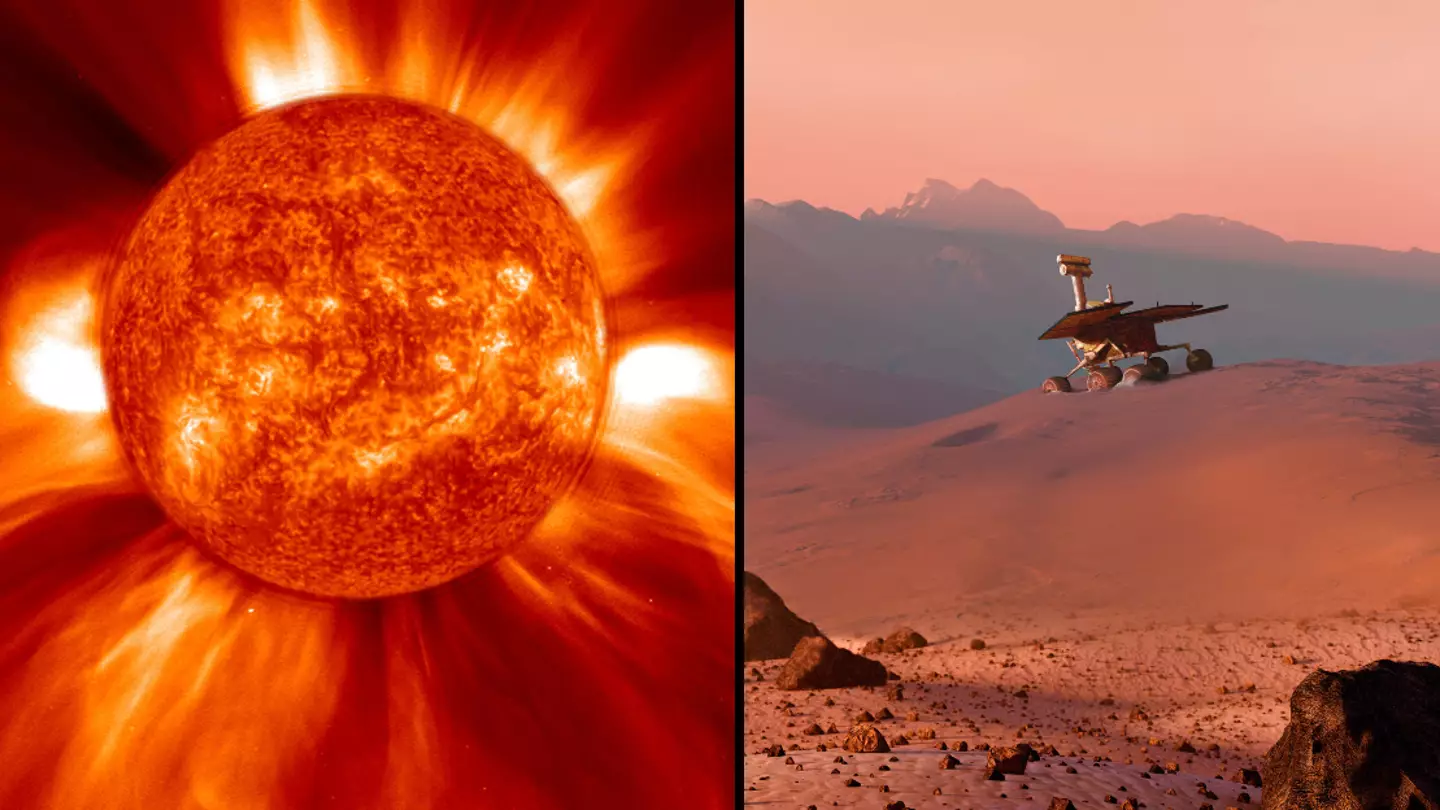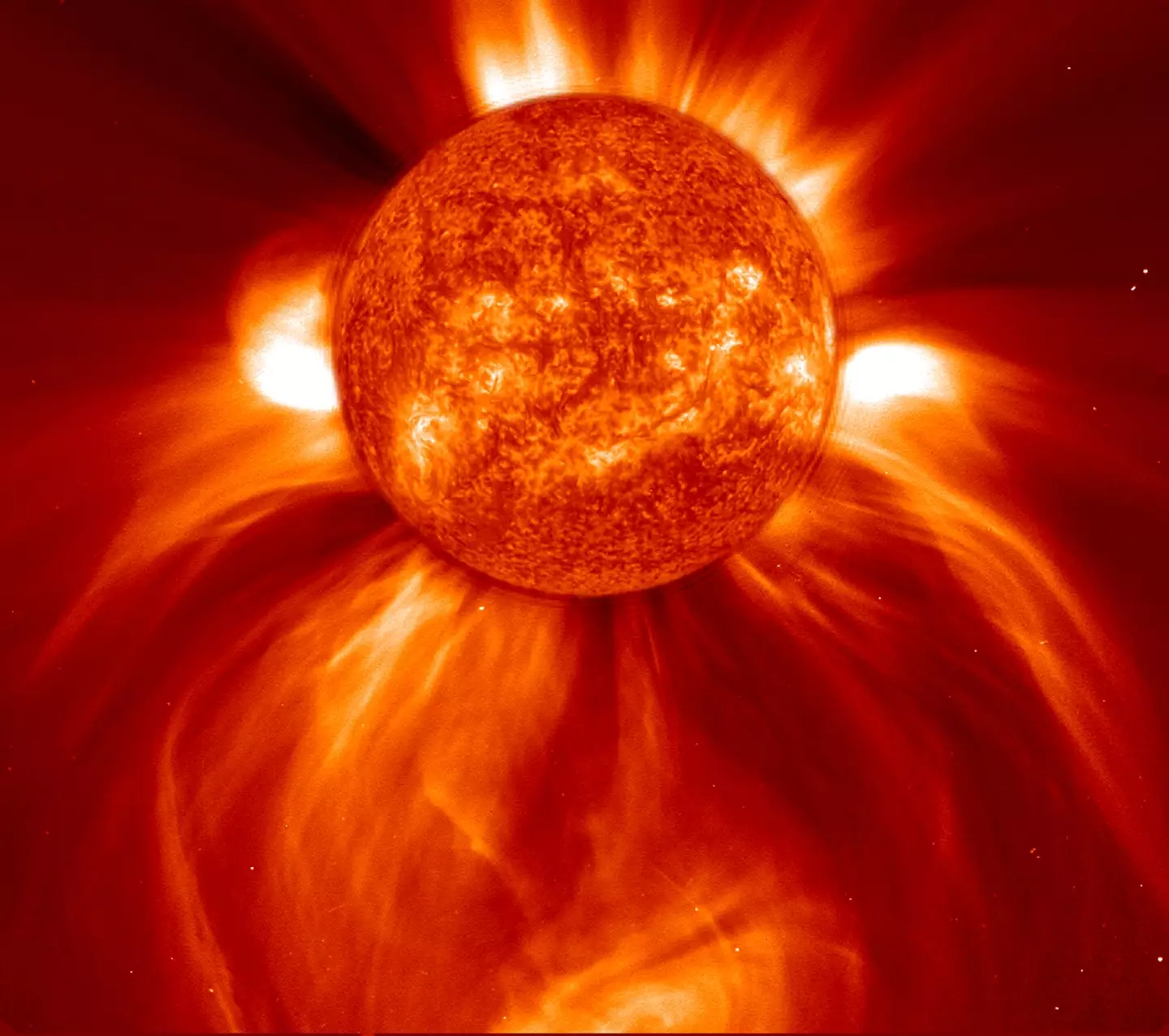
The answer as to whether life had ever existed on Mars could be given a huge boost this year thanks to massive explosions on the surface of the Sun.
At the centre of our solar system is the big fiery inferno that, every 11 years or so, enters into what NASA calls its 'peak activity'.
Essentially, it becomes more violent with scolding hot outbursts in to space on a much more regular basis.
Advert
2024 is such a year for the Sun, with it set to be a massive period that could decide NASA's plans to sent astronauts to Mars for the very first time.
But it's so much more than that, with it hopefully providing the scientific basis to understand more about the potential of extraterrestrial life on Mars.
From the end of 2024, NASA is set to focus its efforts on studying these big explosions happening on the surface of Earth's star. Or the Sun 'throwing fiery tantrums' as NASA officially describes it.
Advert
When it comes to sending astronauts to Mars, studying the solar events will be vital given Mars' lack of a magnetic field.
On Earth, the magnetic field shields us from most solar outbursts that are thrown towards the planet, whereas Mars doesn't have that luxury and thus the effects are felt pretty forcefully on its surface.
The plan here is to study exactly how astronauts would be impacted by the solar explosions and how they could be shielded if it is deemed safe enough to send them in the first place.

NASA's MAVEN [Mars Atmosphere and Volatile Evolution] and RAD [Radiation Assessment Detector] spacecraft will be positioned above the Martian surface where they will study how these solar storms impact what happens on the surface.
Advert
The RAD spacecraft will also be essential to ongoing attempts to confirm ancient life on Mars and if confirmed - specifically when it did and why it might have died out.
“You can have a million particles with low energy or 10 particles with extremely high energy,” said RAD’s principal investigator, Don Hassler of the Boulder, Colorado, office of the Southwest Research Institute.
“While MAVEN’s instruments are more sensitive to lower-energy ones, RAD is the only instrument capable of seeing the high-energy ones that make it through the atmosphere to the surface, where astronauts would be.”

Data from RAD has and will continue to help scientists understand how radiation breaks down carbon-based molecules on the surface.
Advert
This process could be vital to understanding whether signs of ancient microbial life are preserved there.
Principal investigator for NASA’s MAVEN orbiter is Shannon Curry, of the University of Colorado Boulder’s Laboratory for Atmospheric and Space Physics.
She said: "For humans and assets on the Martian surface, we don’t have a solid handle on what the effect is from radiation during solar activity.
"I’d actually love to see the ‘big one’ at Mars this year - a large event that we can study to understand solar radiation better before astronauts go to Mars."
Featured Image Credit: HUM Images/Universal Images Group via Getty Images/Getty Stock ImagesTopics: Space, Technology, Science, World News, Aliens, Weird, NASA